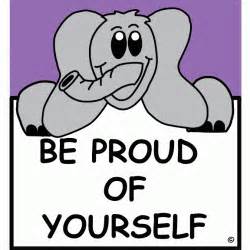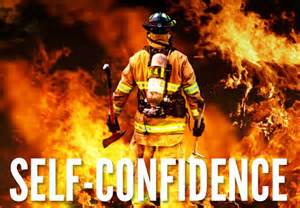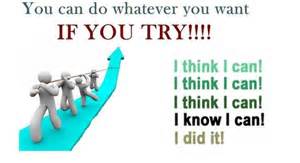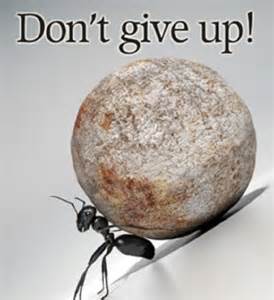How to Build Self Confidence
Before I teach you “How to Build Self Confidence,” one must have an idea of what Self Confidence is.
The general accepted definition of “Self-Confidence” is the inner feeling of being equal to the task to be performed. For instance, I am very self confident I can leap a two foot crevice, but I’m not so self confident I can successfully leap an eight foot crevice.
This difference in belief is what defines the desired difference between confidence and arrogance, one a very desirable trait, the other not so desirable. Confidence is based in the unshakable belief, and proven facts in your ability to successfully perform a task, such as jumping over a two foot crevice, but arrogance is based in unproven belief of one’s ability to perform a task, such as jumping an eight foot crevice.
Obviously, the ability to build self-confidence in Sports, can be invaluable in increasing our skill levels, as there will be no reasonable task we think we are incapable of accomplishing. Such as, “I’ve never hit a 98 mph fastball, but I know I can if I practice hard enough.”
Sources of Self-Confidence:
There are 6 normal sources which makes a player feel confident he can not only accomplish the task, but excel in the performance.----How to Build Self Confidence
1. Source Performance Accomplishments, which simply means I’ve done it before, I can do it again. Anytime a person performs a skill successfully, especially numerous times, they feel this task will no longer present a challenge and will be eager to progress to the next level of skill. This self confidence is extremely important for advancement, however, …
It’s important to have a set training plan, which will elevate a player’s skills in small increments and progress him slowly in a series of successful tasks. Success breeds success,but failure can also breed failure, therefore it can be disastrous to push a player too fast or hard, creating more failures than successes.--How to Build Self Confidence

How to Build Self Confidence
2. Source
Being personally involved with the success of others can breed self-confidence. For instance, if a teammate, throws 85 mph and has a good curve ball and is considered an Ace, and you throw 88 mph, with a good curve ball and a change-up, you know you can perform just as well as your teammate.--How to Build Self Confidence
The “If he can do it, I know I can too.” syndrome.
3. Source
Verbal Persuasion or Convincing, the means of changing an attitude and/or behavior, with Positive Verbal Re-enforcement. A good Coach can instill confidence and energy in a player by convincing him he can do a particular task.
“I’ve seen you hit pitchers a lot faster than he is. Focus and get him.” Positive Re-enforcement.
Players can practice this type of self-confidence building themselves by telling themselves over and over they can accomplish something. It’s important how the athlete performs this self esteem task. For instance, while in the On-Deck Circle, don’t think “I can’t strike out,” but rather “I will make contact.” The mind will only consider the given task of making contact, it won’t consider the alternative of striking out.
4. Source
Imagery: the ability to relive or create the positive results desired. You’ll often see gymnasts, waiting to perform, off by themselves, eyes closed and slightly moving their bodies as they visualize their performance in their mind.
By seeing themselves perform their drill perfectly, their mind is convinced the next performance will also be perfect, because it just witnessed it happen. It’s a You get what you see circumstance.

5. Source
Certain physiological feelings or states of mind can reduce a player’s self-confidence if not properly managed. The feeling of butterflies or a nauseous stomach, muscle tension or twitches and general uneasiness of the body and mind can be construed as Doubt of the ability to successfully perform.----How to Build Self Confidence
By seeing themselves perform their drill perfectly, their mind is convinced the next performance will also be perfect, because it just witnessed it happen. It’s a You get what you see circumstance.
Clickbank Products
Since self-confidence is mainly an emotional, physiological and mental reaction, we must know what we are naturally confident of and what we have natural fears of not being able to perform before we can begin building an unshakable foundation of self confidence.----How to Build Self Confidence
Take a sheet of blank paper and draw a line down the center dividing it in to. On one side of line write Confident Situation - Not Confident on the other side.
For instance on the confident side you may have:
1. I Am Very Good at Hitting Fastballs…
2. I Have A Very Sure Glove and Strong Throwing Arm…
For the Not So Confident Side:
1. I Have Trouble Hitting Curve balls…
2. I Can’t Bunt Well ….
My list is a lot longer than this, but this is for illustration purposes. Write your list honestly and in earnest and hang onto it, as will help develop areas you need to improve and you’ll use it to complete the following exercises.
The following exercises are imperative in developing an athlete’s confidence, focus and ability to grasp new concepts and use them to improve their performance. You may have to re-read them in order to fully understand the intent and you’ll definitely have to practice them on a continuing basis in order to master the drills, but the rewards will justify the work.

How to Build Self Confidence
Exercise: The Spotlight of Excellence:
This is a “Visualization Exercise” which narrows the distance between the mental state associated with past successful performances and your confidence, marrying the two into one.---How to Build Self Confidence
1. Locate yourself in a quiet area which is as dark as possible, helping enhance the environment for mental visualization. Now imagine yourself sitting in the darkness as a spotlight beams down on the ground about 3 feet in diameter.
2. Now think back to past achievements in your sport when you were excelling seemingly with little to no effort. See yourself hitting that walk off home run, or the diving catch of a sinking line drive.
3. Looking at yourself from “Outside” your body, see yourself performing the tasks which you were successful. Slowly and deliberating see every move, feel every emotion, smell and hear the aromas and sounds around you.
Hear the ringing “Whack” of the ball hitting the bat reverberating inside your ears. Feel the impact pulsing through your hands and up your arms as the bat solidly propels the ball skyward. Experience the swell of excitement as you feel your spikes dig into the crusty earth as you begin your journey around the bases. Hear the screams and cheers of excitement, smell the hot dogs as you round the bases.
Mastering this visualization process, you’ll be able to accomplish it within seconds after practice, not only strongly develops and re-enforces our self-confidence, but when we hit a down period, which everyone experiences, it gives us the ability to nullify, or at least restrict, any natural doubts which can creep in during a lull in positive performances.

Exercise: Hear It - Believe It:
It’s a proven scientific fact that positive verbalization can increase self-confidence, affirm your abilities to play at peak performance and with intense focus and concentration.
Did you know your mind can not distinguish if it’s hearing your voice or another’s. In other words, your sub-consciousness responses to positive (or negative) verbalization from you as well as it does from any other person.
Establishing Positive Verbalization works and the fact the subconscious is as susceptible to our own voice as any other, we have stumbled onto a Gold Mine of self-confidence tools.
Every athlete should create their individual list of positive statements and perform this task religiously every day. The statements should be short, easy to say, believable and should pertain to issues we are not so confident of. (check your list)
Sample examples:
1. Defensive Back Football: “I will not give 1” of ground.”
2. Pitcher in baseball: “I will throw with pinpoint accuracy.”
Make your own list of 4 or 5 statements and read them out loud, every night before bed and every morning. Repeated hearing of these positive statements will become engrained in your subconscious and Will have a profound influence on your performance.---How to Build Self Confidence
Exercise: Exploit the Enemy:
Sometimes we become so obsessed with dealing with our own doubts or anxiety, we fail to remember, our opponents are dealing with the same issues. We have learned methods to deal with our issues in a positive manner, so let’s see if we can exploit the weaknesses of our opponent.

How to Build Self Confidence
1. One method is to view video footage of the opposition. While watching the other team’s number #4 hitter, a massive and powerful hitter, who rarely strikes out, we notice he appears to have a problem handling fastballs in on his hands, because he can’t extend his arms.---How to Build Self Confidence
When he does make contact, it usually results in a feeble infield pop fly or a grounder to the left side, while 95% of his strike outs resulted from chasing this pitch. Obviously, you have found a weakness to prey upon.
2. Pay special attention to players who seem to become quickly irritated, especially if they make a mistake, which means they are filled with self doubt, therefore they demand perfection from themselves.
When the opportunity presents itself, passing one another exchanging the field, mention to him what a wonder play he made on a ground ball, one which he booted. You don’t need to be sarcastic, smile if you want, but the seed will be planted and will continue to gnaw at him throughout the game, more than likely resulting in another error.
3. Disrupting the flow of a player is key in throwing him off his game. Always being observant, you notice the opposing pitcher has developed a smooth routine of throwing the pitch, quickly receiving the return throw from the catcher, throwing again, and he’s setting one batter after another down.
When you bat your goal, of course is to get on base, but a very close secondary goal, is to disrupt the pitcher’s flow. Take your time getting set in the batters box, call time out, tie your shoe laces…do whatever you can in order to stop the pitcher’s routine. Sometimes this has no effect at all … other times it can lead to a pitcher losing control of the strike zone.
Exercise: Feel the Beat:
The ears have a huge impact on our mood and energy level. Similar to vision, our hearing amplifies our emotions, positively or negatively, and we need to use this asset to our benefit in creative ways which inspire us.
Everyone has their own taste, that’s why there’s Heavy Metal as well as Opera, so I won’t dictate what type of music you listen to in order to prepare for competition, but I’ll suggest the following guidelines.---How to Build Self Confidence
1. If you want to maintain a relatively calm, confident feeling and keep your physiological arousal low, select music with a slower tempo below the 110 bpm.
2. If you want to ramp up your energy, psyching yourself up to a fever pitch right before competing, listen to music which is Over 110 bpm which will get the Adeline flowing.
Building Self-Confidence, at times may seem an elusive goal which you’re not appearing to be making any head way, however, you must remember …“You are responsible for your own destiny.” No body else can do it for you.
You now have the tools in which to take your self-confidence to what ever level you choose. You have learned the principles of understanding self-confidence and what makes it wane, you know the benefits of Visualization and Positive Self-Talk, as well as how to look for and capitalize on your opponents’ weaknesses, and last but not least … you learned to use inspirational music to foster the “Can Do” attitude.
“ Confidence is Contagious …. But so is lack of confidence”
Vince Lombardi
How to Build Self Confidence to Sports Motivation

New! Comments
Have your say about what you just read! Leave me a comment in the box below.